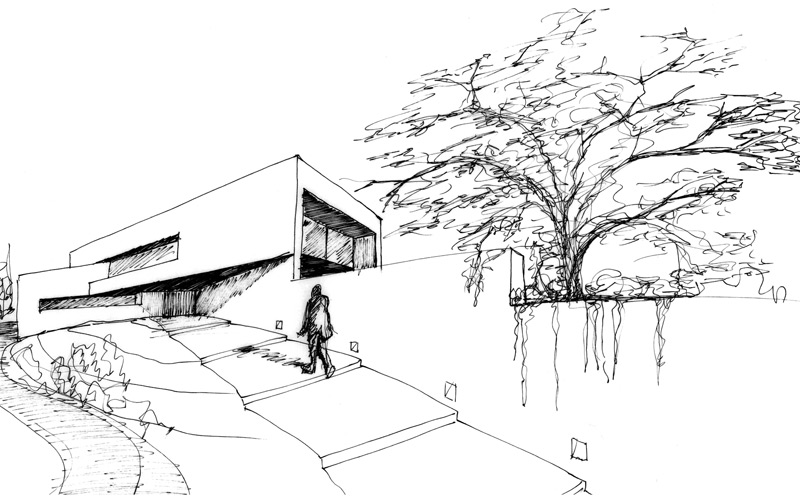W
e are in the presence of an architect, Otto Medem, who conceives his work as a fundamental and functional art. Yes, architecture is a science and a utilitarian art, and as such, good architecture cannot be comprehended without the appropriate combination of both of these elements. The architect is, I believe, an artistic creator of useful and balanced environments for mankind; private or public spaces which must offer satisfaction, the aesthetic peace of observation and comfort and enjoyment to those who use or inhabit the work at hand. As Medem does.
Everything in modern architecture —or almost everything, I believe— is born from Le Corbusier’s groundbreaking spirit. It is the Swiss-French architect who decides to take on the renovation of forms and objectives after long years of creative boredom, both in the construction of buildings as in the impact of these on urban development. Starting with Le Corbusier, modern architecture has established a discussion, a permanent dialogue between its commitment to the so-called pure lines and dramatic effect, bringing about avant-garde creations signed by Ghery, Foster, Niemeyer, Moneo, the controversial Calatrava or Alvaro Siza. I have no doubt that, being a good observer, Otto Medem has taken them into account —together with his own ideas— to develop any concept into his excellent architectural creations.
Otto Medem has focused on the field of individual family homes which he conceives as bastions of beauty, strength and practicality, as proclaimed by the basic principles of architecture. Yet he has also wanted to distinguish his creations with a very personal style based on infinite and simple lines, where the aesthetics are marked by the use of perspective and the fusion of materials such as wood, concrete, glass and nature. His planes projecting towards the horizon remind us —in spite of geographical and creative differences- of fundamental works by the best architects. Fundamentally, the Americans such as the Brazilian Guilherme Torres or the Mexicans Luis Barragin and the very interesting J. Carlos Seijo.
Architecture is learning and creation… And something else: the manner in which Medem approaches his projects is the result of a conjunction of the architect’s idea about the new habitable space, the client’s personality, and the adaptation of all this to the natural space upon which the building will be set. One of the best examples from his personal catalogue is the Wind House, in the Madrid neighborhood of Collado Villalba, where the structure seeks spaces in the rock to go scattering a living room here, a splendid bedroom there or a swimming pool below. All working towards building an unprecedented home and —this is important– an absolutely livable, comfortable one. Great geometric accuracy can be seen in the Molino de Hoz House, in Las Rozas —a building of extremely pure lines, in collaboration with Bruno Miguelez— perfectly adapted to the orography of an adjacent plot with a natural park, known as Guadarrama. And what can be said of the other homes built by Medem in Galapagar, Valdecabañas, Valdemorillo or others that appear in this issue, always in impressive landscapes? Browse through these pages with ease and enjoy the work of one of the most recognized architects.
The works of Otto Medem are beautiful architectural monuments for well-being. Quite a display of harmony for those who —like the author of this prologue— declare themselves to be architecture lovers. An art which, effectively, more than a form of expression becomes, at times, a philosophy of life. Not only that. His ideas about urbanism and monumentality without losing human scale predict growing success beyond that of residential architecture. You will see.
My reference homes have been, throughout my life, farmhouses, olive grove estates (like mine), rustic homes, windmills. With materials such as mud, timber beams, clay bricks, straw, antique tiles, etc.
I would never have thought of living in a modern home, of those without a tiled roof and even less square…until now!
When I first entered my current home, I didn’t know who Otto Medem was, but when I came out the other side he had earned my eternal respect.
I have never seen a home with more light, from any side, or with a greater feeling of openness. The basement has as much light as the top floor, and that seemed unbelievable to me. The design is simply spectacular, and turning the walls into vitrines opening onto a garden, gives it a spectacular spaciousness.
He has managed to make me live in a square house, and that in itself is already an achievement.



